Picking the best places in New Zealand feels like trying to choose between winning lottery tickets – they’re all incredible in their own way. From the rolling hills of Hobbiton to the snow-capped peaks of the Southern Alps, this country packs more natural wonders into its two islands than seems fair. You could spend weeks exploring just the fjords, caves, and beaches, not to mention the charming cities and towns that dot the landscape.
We’ve tackled the tough job of narrowing down New Zealand’s endless highlights into a manageable list. Our picks include both North and South Island gems, mixing famous spots you’ve probably seen on postcards with hidden corners that locals love. We looked at each place not just for its good looks, but for what makes it special – whether that’s the rich Māori culture, unique wildlife, or the way it makes visitors feel when they first arrive.
Consider this list your starting point for exploring Aotearoa (that’s New Zealand in Māori). While we couldn’t include every amazing spot in the country, these 20 places offer a perfect snapshot of what makes New Zealand one of the world’s most remarkable destinations.
- Best tourist destination: Milford Sound
- Underrated hidden gem: Putangirua Pinnacles
- Best for families: Hobbiton Movie Set
- Best for couples: Lake Tekapo
- Best for solo travelers: Abel Tasman Track
- Best for nature lovers: Tongariro National Park
Queenstown, South Island
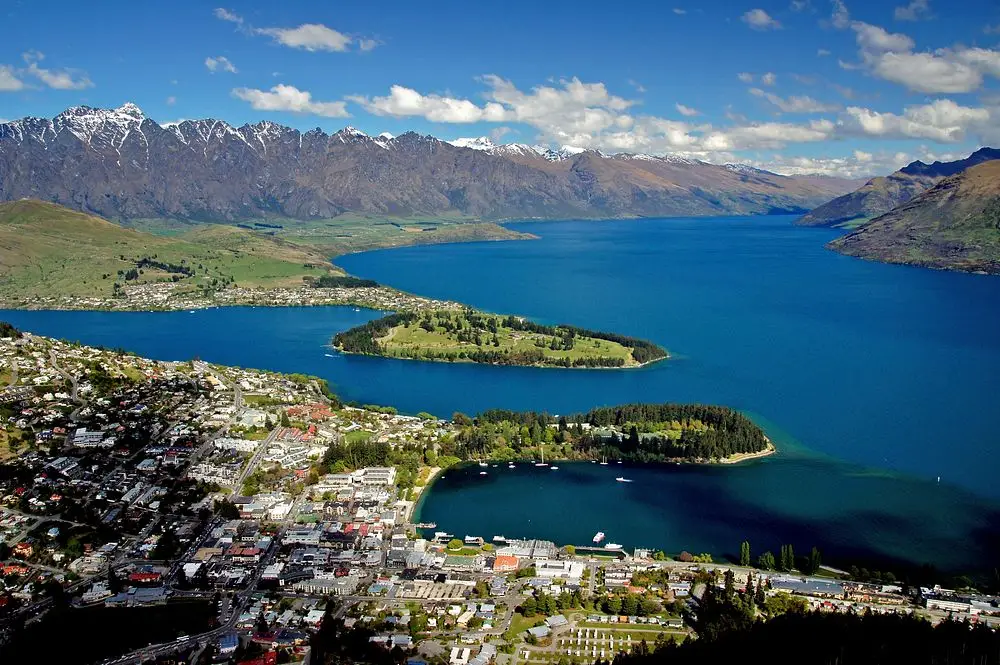
I always tell adventure seekers to make Queenstown their first stop in New Zealand. Nestled between the crystal-clear Lake Wakatipu and the remarkable Southern Alps, this compact mountain town serves up year-round thrills – from skiing and snowboarding in winter to hiking and mountain biking when the snow melts. The city earned its nickname as the “Adventure Capital of the World” thanks to the wild array of activities you can try here, like bungee jumping from the Kawarau Bridge or jet boating through narrow river canyons.
Milford Sound, Fiordland
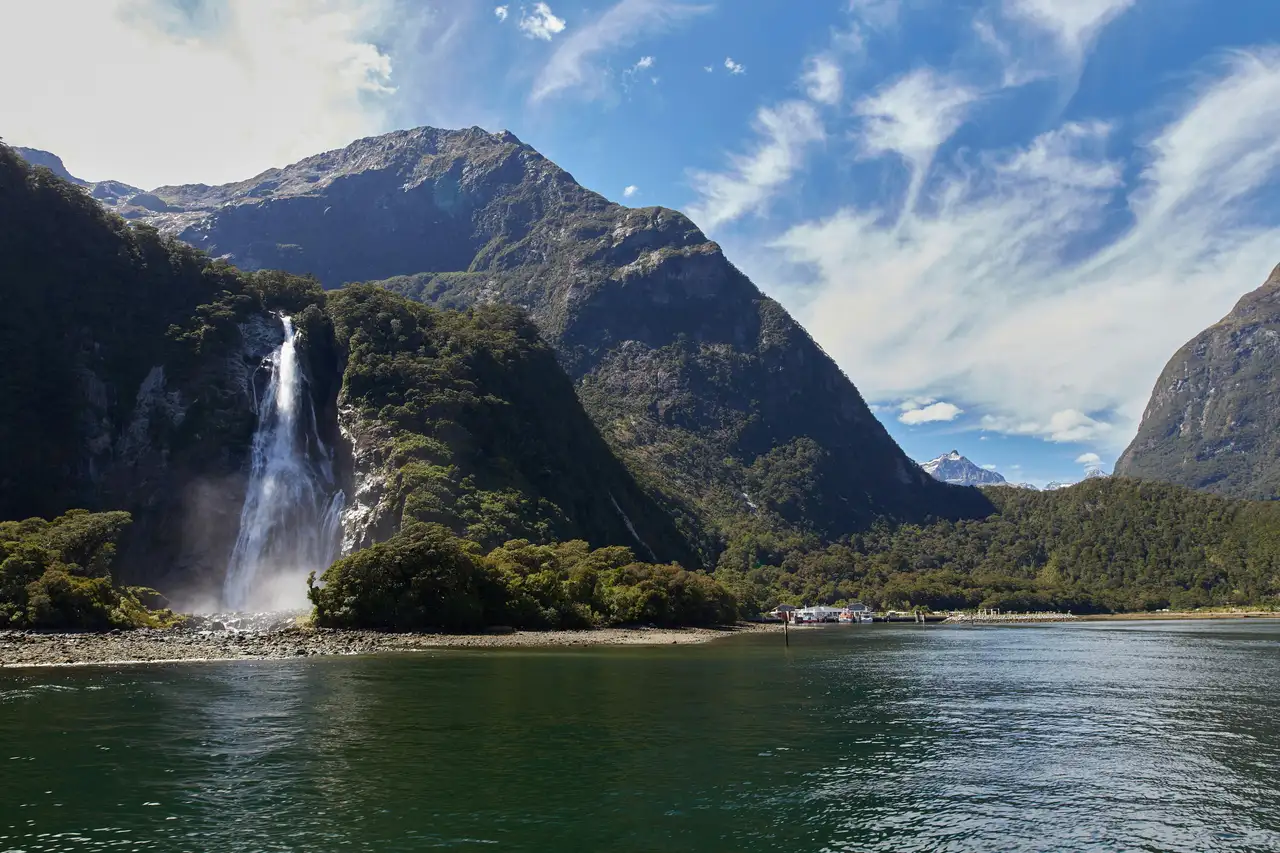
Ever watched a waterfall plunge 1,000 feet into dark waters while seals play on nearby rocks? That’s just another day at Milford Sound, a majestic fiord carved by ancient glaciers in New Zealand’s South Island. Nicknamed the “eighth wonder of the world” by Rudyard Kipling, this natural marvel puts on a show rain or shine – in fact, the numerous waterfalls are at their most impressive during rainfall. Take a kayak trip beneath towering Mitre Peak, spot dolphins playing in the inky waters, or cruise past fur seal colonies lounging on sun-warmed rocks. For the best views, hop aboard a scenic flight from Queenstown or brave the winding Milford Road, where you’ll pass through hand-carved tunnels and ancient rainforests.
Mount Cook National Park

Of all the places I’ve visited in New Zealand, Mount Cook National Park stands out as a true natural wonder. This alpine paradise, home to the country’s highest peak, Aoraki/Mount Cook, draws hikers and outdoor enthusiasts from across the globe to explore its rocky trails and crystal-clear glacier lakes. The park’s network of walking tracks leads visitors through valleys carved by ancient ice, past turquoise pools, and right up to the base of towering peaks. It’s not just a place for serious mountaineers – even casual visitors can enjoy short walks to spots like the Hooker Valley Track, where the views of Mount Cook reflected in glacier-fed lakes make you feel tiny against nature’s backdrop.
Rotorua
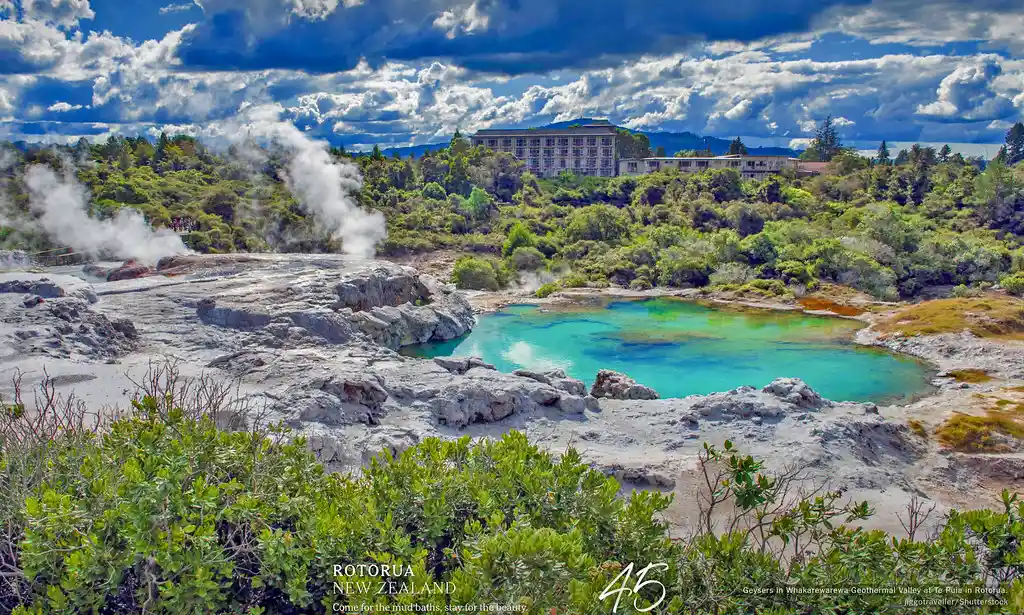
Rotorua caught my attention back in 2019 when I was searching for New Zealand’s most intriguing destinations. Located in the heart of the North Island, this geothermal wonderland sits along the Pacific Ring of Fire, where the Earth’s crust puts on a natural show. Steam rises from sidewalk vents and bubbling mud pools dot the landscape, while the scent of sulfur hangs in the air – a reminder of the powerful forces at work below. The nearby Whakarewarewa Forest draws mountain bikers and hikers to its trails, winding through towering California redwoods that were planted over a century ago. At Te Puia, you can watch the Pohutu geyser shoot water 30 meters into the sky, while learning about Māori culture from local guides who’ve passed down their knowledge through generations.
Bay of Islands
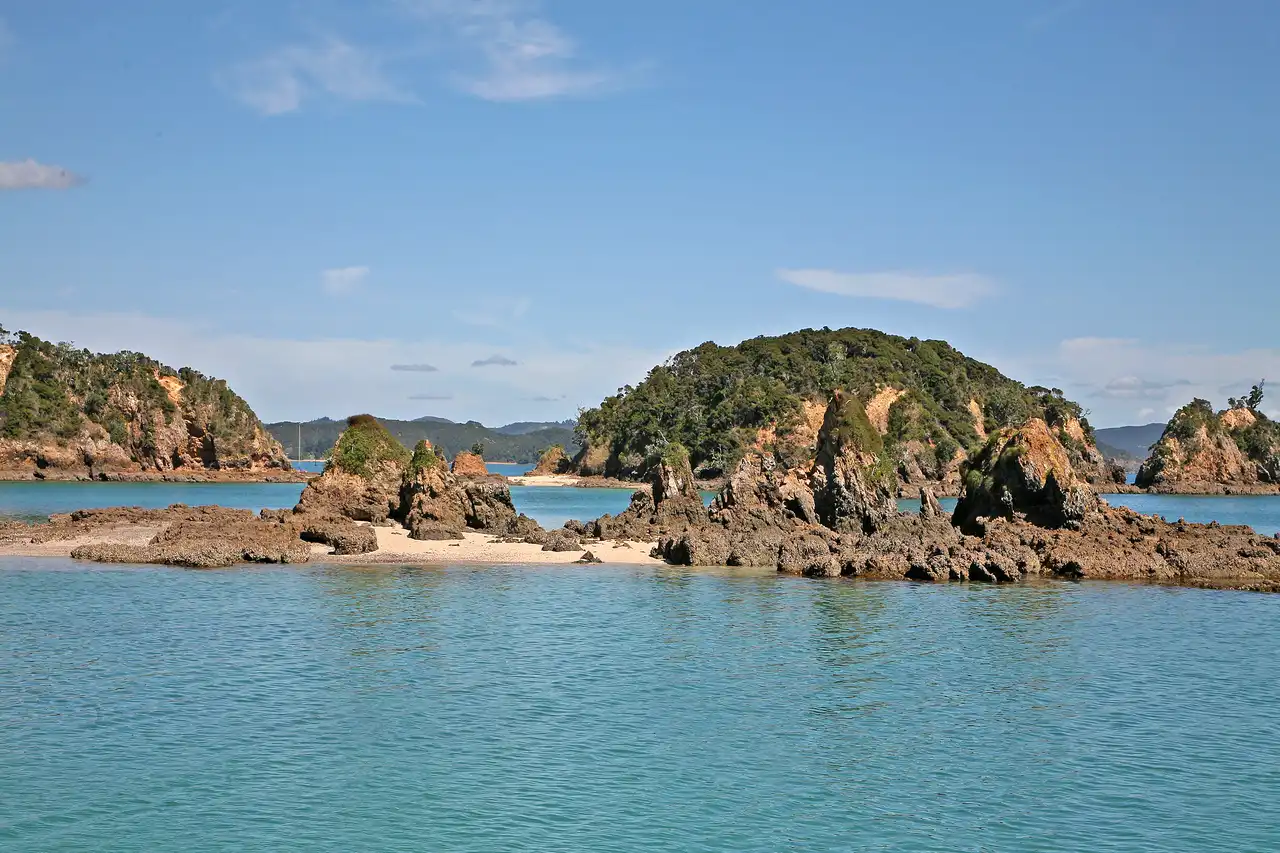
I first visited the Bay of Islands in 2019, drawn to this cluster of 144 islands scattered along New Zealand’s northeastern coast. Located just a few hours from Auckland, this maritime paradise sits in the warm waters of the South Pacific, with each island offering its own slice of natural beauty. Small coastal towns like Russell and Paihia dot the shoreline, while secluded coves and hidden beaches stretch as far as the eye can see. The clear waters here are perfect for dolphin watching and sailing, with local boats weaving between the islands daily. What really makes this place special is Waitangi Treaty Grounds, where New Zealand’s founding document was signed, offering visitors a deep connection to Māori culture and the country’s history.
Franz Josef Glacier

Located on the rugged west coast of New Zealand’s South Island, Franz Josef Glacier is one of the most accessible glaciers in the world. While most glaciers are retreating to higher ground due to climate change, this massive ice formation still reaches down into temperate rainforest, making it uniquely special. From the nearby village, visitors can walk right up to the glacier’s terminal face in under an hour, or take a helicopter ride to actually set foot on the ancient ice. The glacier moves up to 50 centimeters each day, creating deep crevasses and ice caves that change constantly. The local Māori name for the glacier is Ka Roimata o Hine Hukatere, meaning “the tears of Hine Hukatere,” and once you see the crystalline ice formations and hear the glacier creaking and moving, you’ll understand why this place holds such cultural significance.
Abel Tasman National Park

Tucked away in the northern tip of New Zealand’s South Island, Abel Tasman National Park feels like a slice of paradise that somehow got mixed up with New Zealand’s rugged landscape. Unlike the country’s dramatic mountain peaks and moody fjords, this coastal wonderland offers golden beaches and clear turquoise waters that wouldn’t look out of place in the Caribbean. The park’s well-maintained coastal track leads you through native forest and along clifftops, where you might spot fur seals lounging on rocks or dolphins playing in the waves below. Because of its unique microclimate, the park enjoys some of New Zealand’s highest sunshine hours, making it a favorite among kayakers and hikers who come to explore its hidden coves and forested trails all year round.
Wellington

Perched at the southern tip of New Zealand’s North Island sits Wellington, the country’s capital city. Like other major cities, Wellington has its museums, cafes, and cultural venues. But unlike its counterparts, it feels like a perfect blend of urban life and natural beauty. Just look out across the harbor where sailboats bob on the waves while office workers hurry past with their flat whites, and you’ll see what I mean. Because of Wellington’s position between the Cook Strait and rolling hills, the city has earned its nickname “Windy Wellington,” and you’ll find colorful houses clinging to hillsides and cozy coffee shops tucked into every corner. The city’s compact downtown makes it easy to walk between the waterfront bars, Te Papa museum, and the famous red cable car, which has been carrying locals up to the botanical gardens since 1902.
Lake Taupo

Many visitors come to Lake Taupo for its massive freshwater lake – the largest in New Zealand – but this destination offers much more than just water activities. The lake itself sits in a volcanic caldera, creating unique geological features like steaming thermal pools and bubbling mud pits scattered throughout the region. While sailing, kayaking, and fishing draw crowds to the crystal-clear waters, the surrounding area boasts excellent hiking trails and mountain biking routes. In winter, nearby Mount Ruapehu becomes a hub for skiing, while summer sees adventure seekers trying their hand at skydiving over the lake or exploring the ancient Maori rock carvings along the shoreline. No matter the season, Lake Taupo’s mix of natural wonders and outdoor activities makes it a year-round favorite for both local and international travelers.
Waitomo Caves
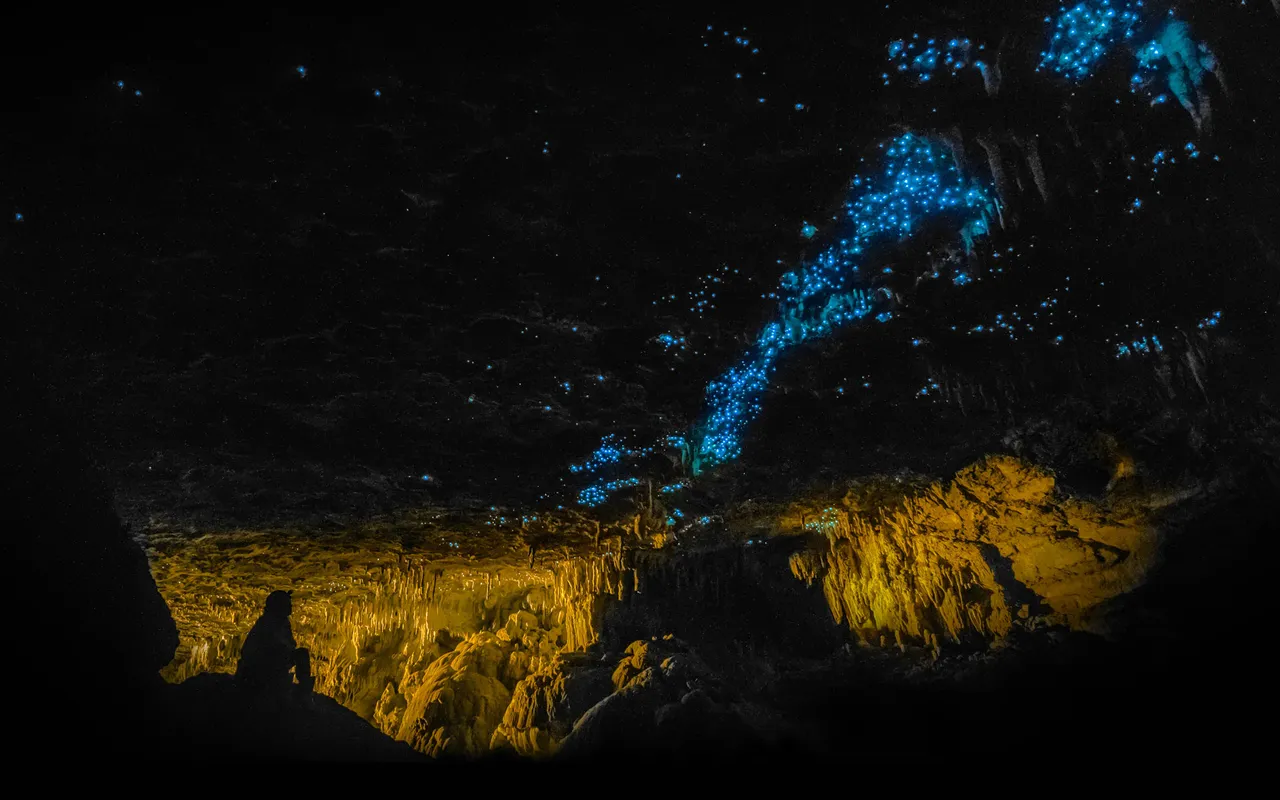
Many visitors journey to Waitomo Caves for its famous glowworm displays, but this underground wonderland offers much more than just luminescent insects. The vast network of limestone caves houses deep pools, towering rock formations, and ancient Maori burial sites that tell stories of New Zealand’s past. While boat tours through the glowworm-lit grottos remain the main draw, visitors can also try blackwater rafting, abseiling, or walking tours that explore the lesser-known chambers. The caves maintain a steady temperature year-round, making them an excellent destination in any season, though booking ahead is recommended during peak summer months.
Bet You Didn’t Know:
The Waitomo Caves in New Zealand are home to thousands of glowworms that create a natural light show, making the cave ceiling look like a starry night sky. What’s even cooler is that these tiny creatures aren’t actually worms at all – they’re the larvae of fungus gnats that use their blue-green bioluminescence to attract and catch flying insects for food.
Tongariro National Park

I first visited Tongariro National Park in 2018, drawn by its reputation as New Zealand’s oldest national park. Sitting in the heart of the North Island, this UNESCO World Heritage site spreads across a dramatic volcanic landscape dotted with emerald lakes and ancient lava flows. The park is home to three active volcanoes – Tongariro, Ngauruhoe, and Ruapehu – with Ngauruhoe gaining fame as Mount Doom in The Lord of the Rings films. The Tongariro Alpine Crossing, a 19.4-kilometer trek through the park, ranks among New Zealand’s top day hikes, leading visitors past steaming vents, crystal-clear lakes, and red-tinged volcanic craters. In winter, the park transforms into a popular skiing destination, with Whakapapa and Turoa ski fields offering slopes for both beginners and experts alike.
Lake Wanaka
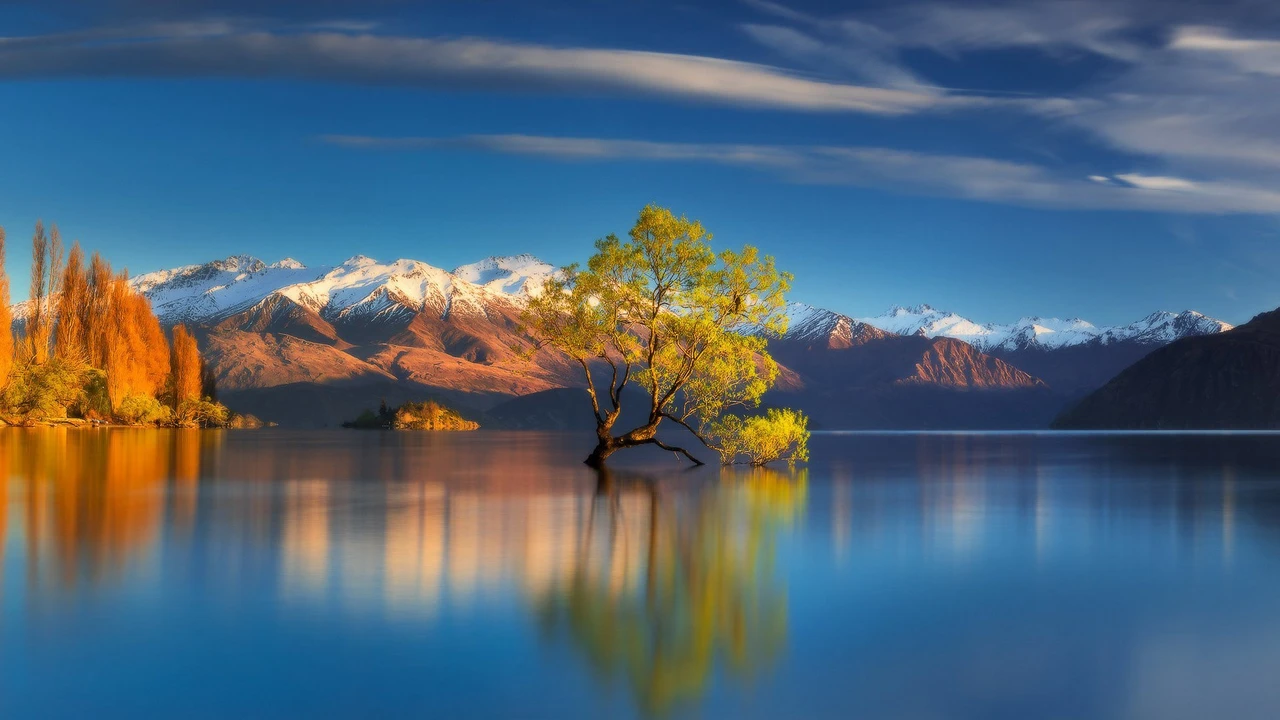
I always recommend Lake Wanaka to travelers looking for the real New Zealand experience. Nestled among the Southern Alps, this crystal-clear lake stretches for 28 miles and offers some of the best views you’ll find in the country. The laid-back town of Wanaka sits right on its shore, where you can grab a coffee, rent a kayak, or just watch the sunset paint the mountains pink. The famous “Wanaka Tree” – a lone willow growing right in the water – has become the spot’s unofficial mascot and makes for some pretty cool photos.
Hobbiton Movie Set, Matamata
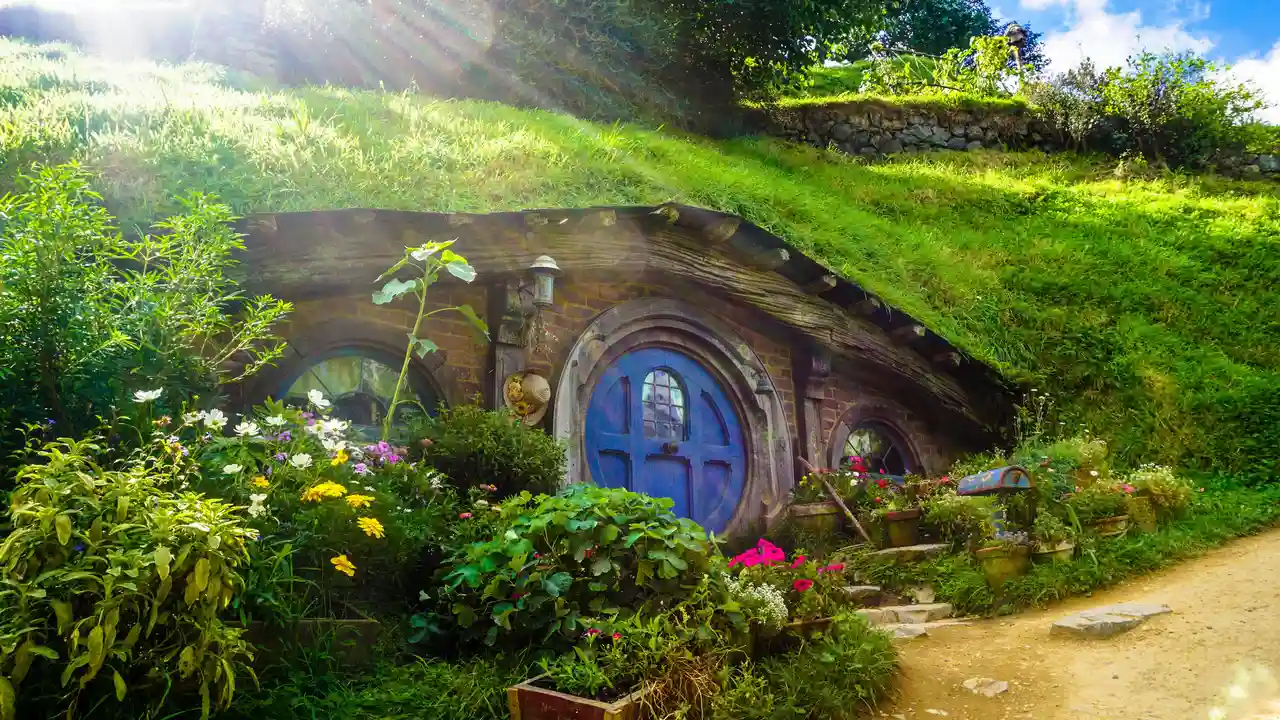
If you’ve ever dreamed of stepping into Middle-earth, Hobbiton Movie Set in Matamata is where fantasy becomes reality. Nestled in the rolling hills of New Zealand’s North Island, this 12-acre movie set was carefully crafted for Peter Jackson’s “The Lord of the Rings” and “The Hobbit” trilogies. The site features 44 hobbit holes with their round doors and little gardens, scattered along winding paths and grassy knolls. The attention to detail is remarkable – from the tiny clotheslines with hobbit-sized clothing to the vegetable patches bursting with actual produce. The tour ends at the Green Dragon Inn, where visitors can sip on traditional Middle-earth beverages while taking in views of the Shire’s peaceful landscape. Even if you’re not a fan of the films, there’s something magical about wandering through this perfectly preserved piece of movie history.
Fox Glacier
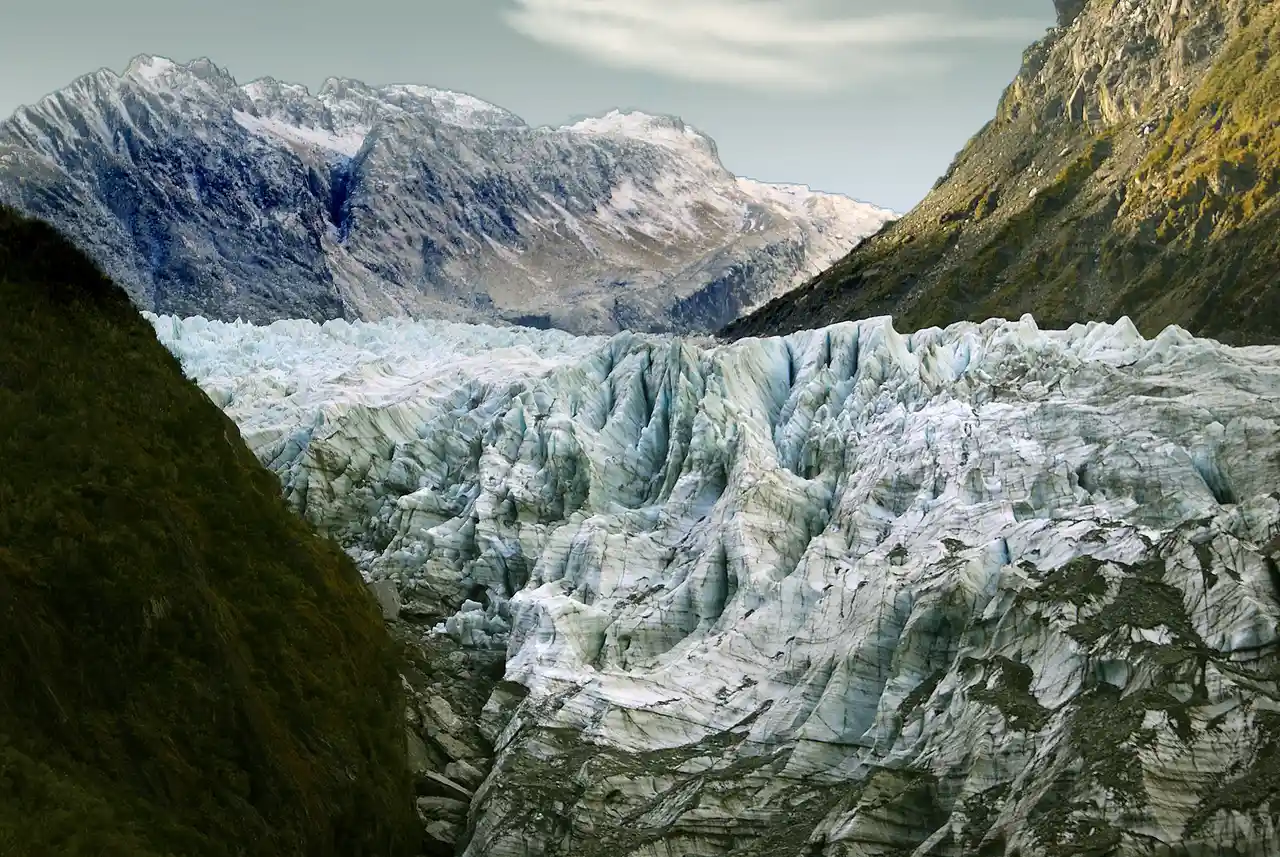
Trek across one of New Zealand’s most impressive natural wonders at Fox Glacier, where ancient ice meets lush rainforest. You can join guided walks that take you right onto the glacier’s surface, where you’ll discover ice caves and crystal-clear formations that have formed over thousands of years. For a different perspective, hop aboard a helicopter tour that lets you land high up on the glacier, giving you a chance to see the Southern Alps stretch out before you. The nearby Lake Matheson offers perfect mirror reflections of Mt. Cook and Mt. Tasman at sunrise, making it an ideal spot for early morning photography.
Lake Tekapo
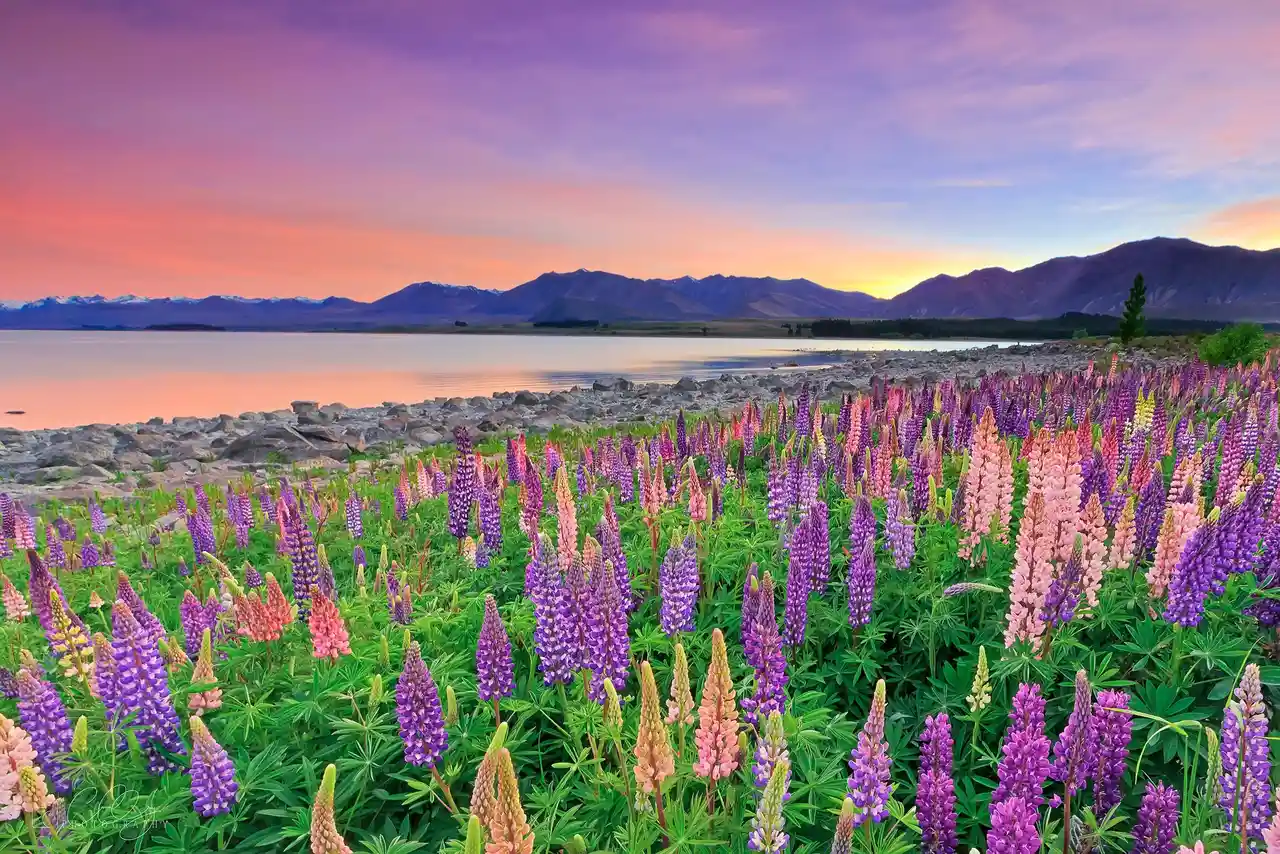
I first visited Lake Tekapo on a road trip through New Zealand’s South Island in 2018. Nestled in the heart of the Mackenzie Basin, this turquoise alpine lake sits beneath the towering Southern Alps, creating one of the country’s most photographed landscapes. The small township along its shores is home to the Church of the Good Shepherd, a humble stone chapel that’s become an icon of the region. What really sets Lake Tekapo apart is its status as a Dark Sky Reserve – when night falls, the sky comes alive with countless stars, creating a natural light show that makes you feel tiny beneath the vast cosmos. The lake’s unique blue color comes from finely ground rock particles in the glacial melt water, and in spring and summer, the shoreline bursts into color with wild lupins painting the landscape in shades of purple and pink.
Auckland
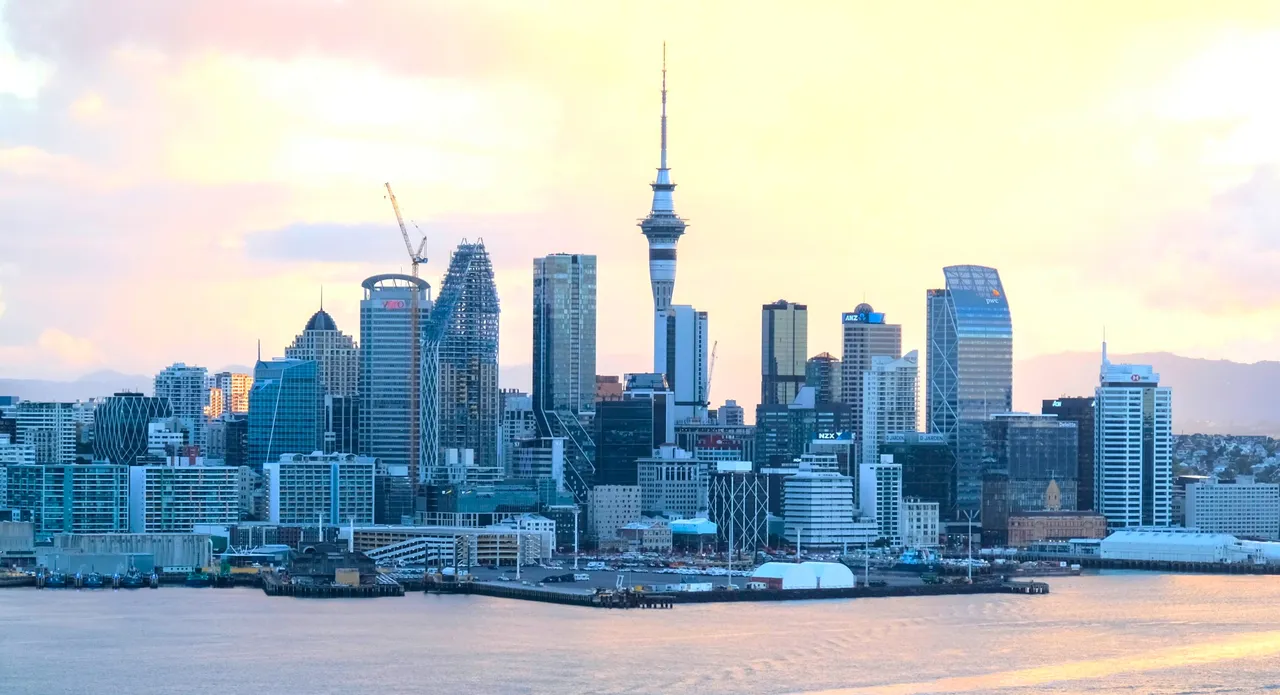
New Zealand’s largest city sits on an isthmus between two harbors, making Auckland feel like it’s surrounded by water at every turn. Unlike other major cities that sprawl outward, Auckland spreads across volcanic hills and coastal bays, giving it a unique layout that blends urban life with nature. The city serves as the cultural hub of the Pacific, where Maori heritage mingles with modern Kiwi life in interesting ways. You’ll find this mix everywhere – from the traditional hangi feasts served in contemporary restaurants to ancient Polynesian artifacts displayed in sleek museums. Because of Auckland’s position between the Tasman Sea and Pacific Ocean, the city has earned its nickname “City of Sails,” and you’ll spot countless white sails dotting the blue waters on any given day.
Napier
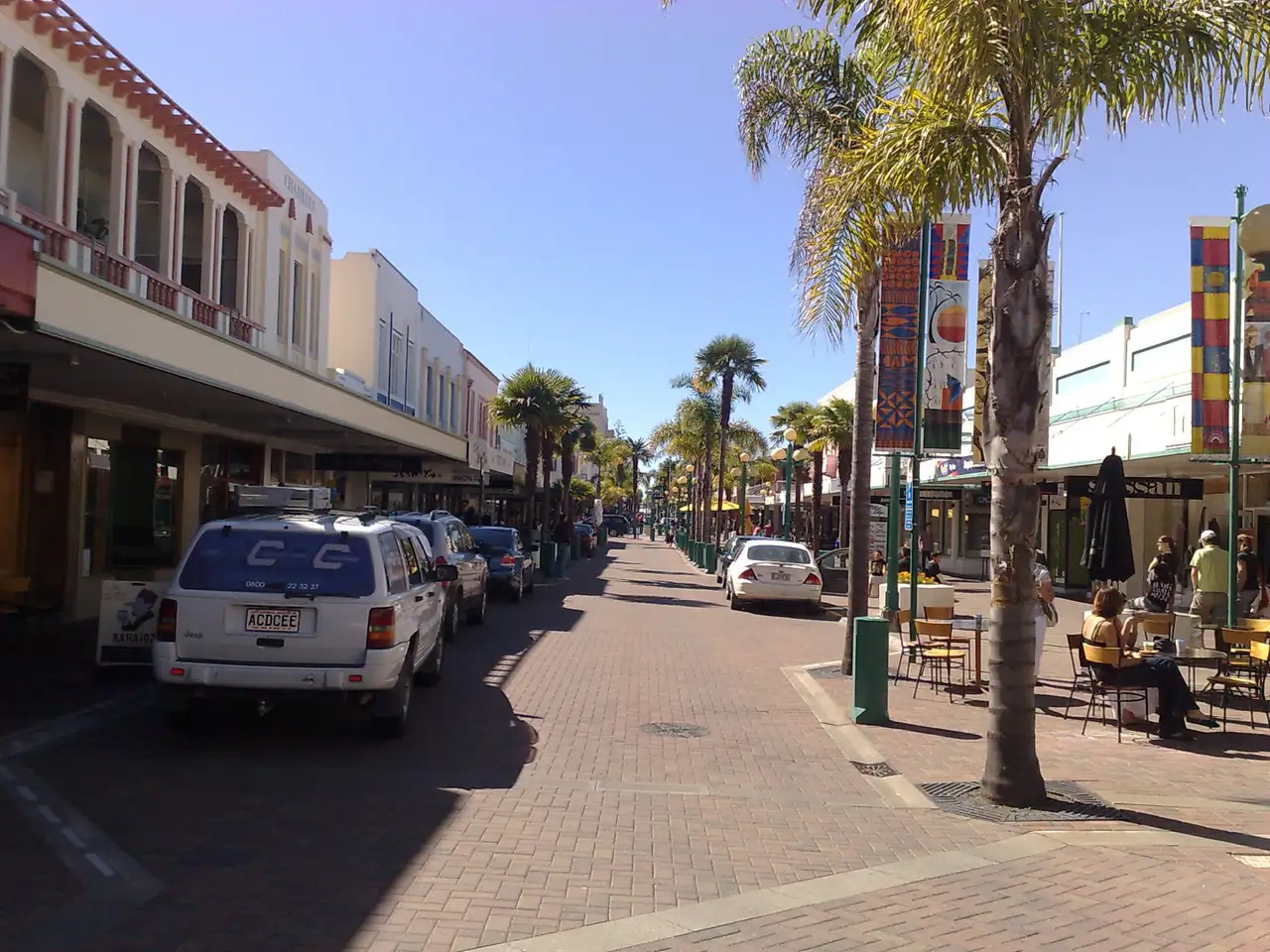
For architecture lovers, Napier needs to be on your New Zealand itinerary. After a devastating earthquake in 1931, the city rebuilt itself in the Art Deco style of the era, creating what’s now one of the best-preserved collections of 1930s buildings in the world. Walking through downtown feels like stepping onto a movie set from The Great Gatsby, with geometric patterns, sunburst motifs, and pastel colors adorning nearly every facade.
Kaikoura

Located on New Zealand’s South Island, Kaikoura sits where mountains meet the sea in the most remarkable way. Like many coastal towns, it has beaches and seafood restaurants, but what sets it apart is the incredible marine life that calls these waters home. Year-round, you can spot sperm whales diving deep just offshore, while pods of dusky dolphins play in the waves. Because of its unique underwater geography, where deep sea trenches come close to shore, marine creatures big and small gather here to feed. The town itself keeps things simple and laid-back, with local fish shops serving up fresh crayfish (which is what Kaikoura means in Maori), and hiking trails that wind along the peninsula, offering plenty of spots to watch seals sunbathe on the rocks.
Waiheke Island
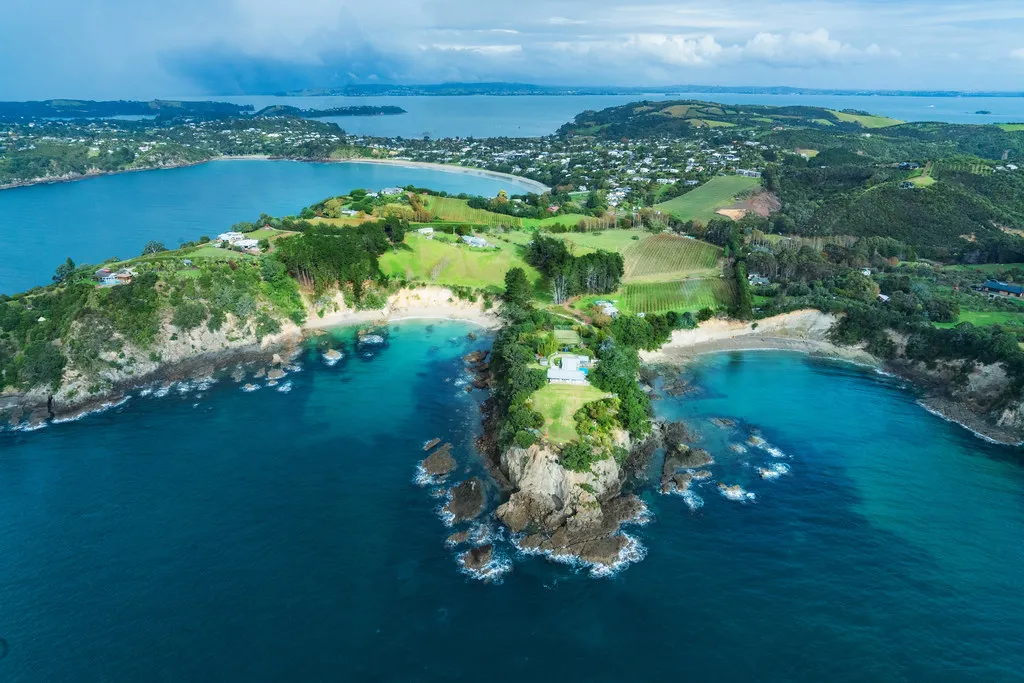
Just 40 minutes by ferry from Auckland, Waiheke Island offers visitors a perfect mix of wine country charm and coastal relaxation. The island’s 30+ wineries, known for their Syrah and Bordeaux-style reds, dot the rolling hills alongside olive groves and art galleries. While many come for the wine-tasting experiences, the island’s beaches like Oneroa and Onetangi provide calm waters for swimming and perfect spots for picnicking. Walking trails weave through the landscape, connecting small villages and lookout points, while local restaurants serve up fresh seafood paired with wines made just down the road. Though popular in summer months, Waiheke’s mild climate and year-round activities make it worth visiting in any season.
Dunedin
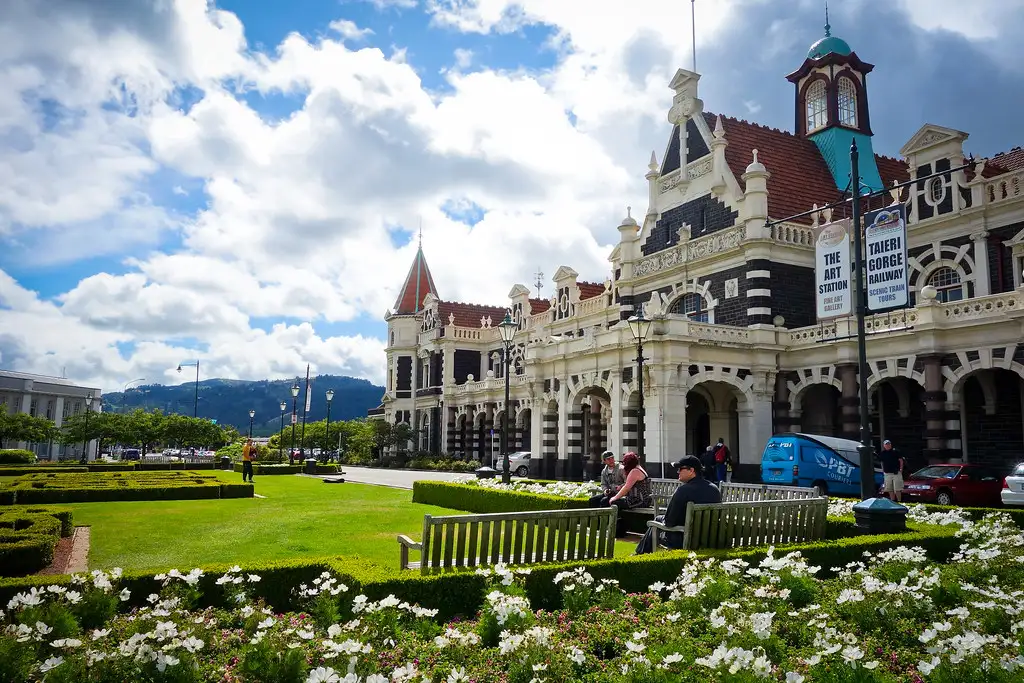
Ever wandered through a city that feels like Scotland but sits at the bottom of New Zealand? That’s Dunedin for you, where Gothic architecture meets Pacific waves and student life buzzes through historic streets. As New Zealand’s oldest university town, it mixes youthful energy with deep Scottish roots – you’ll spot bagpipers on the Octagon and Victorian buildings that could’ve been plucked straight from Edinburgh. The city serves as a gateway to the Otago Peninsula, where you can watch yellow-eyed penguins waddle home at dusk and royal albatrosses soar overhead. Between sipping flat whites at hidden cafes and exploring the world’s steepest street (Baldwin Street), you’ll find yourself in a unique corner of New Zealand where wildlife, heritage, and student culture create something entirely unexpected.